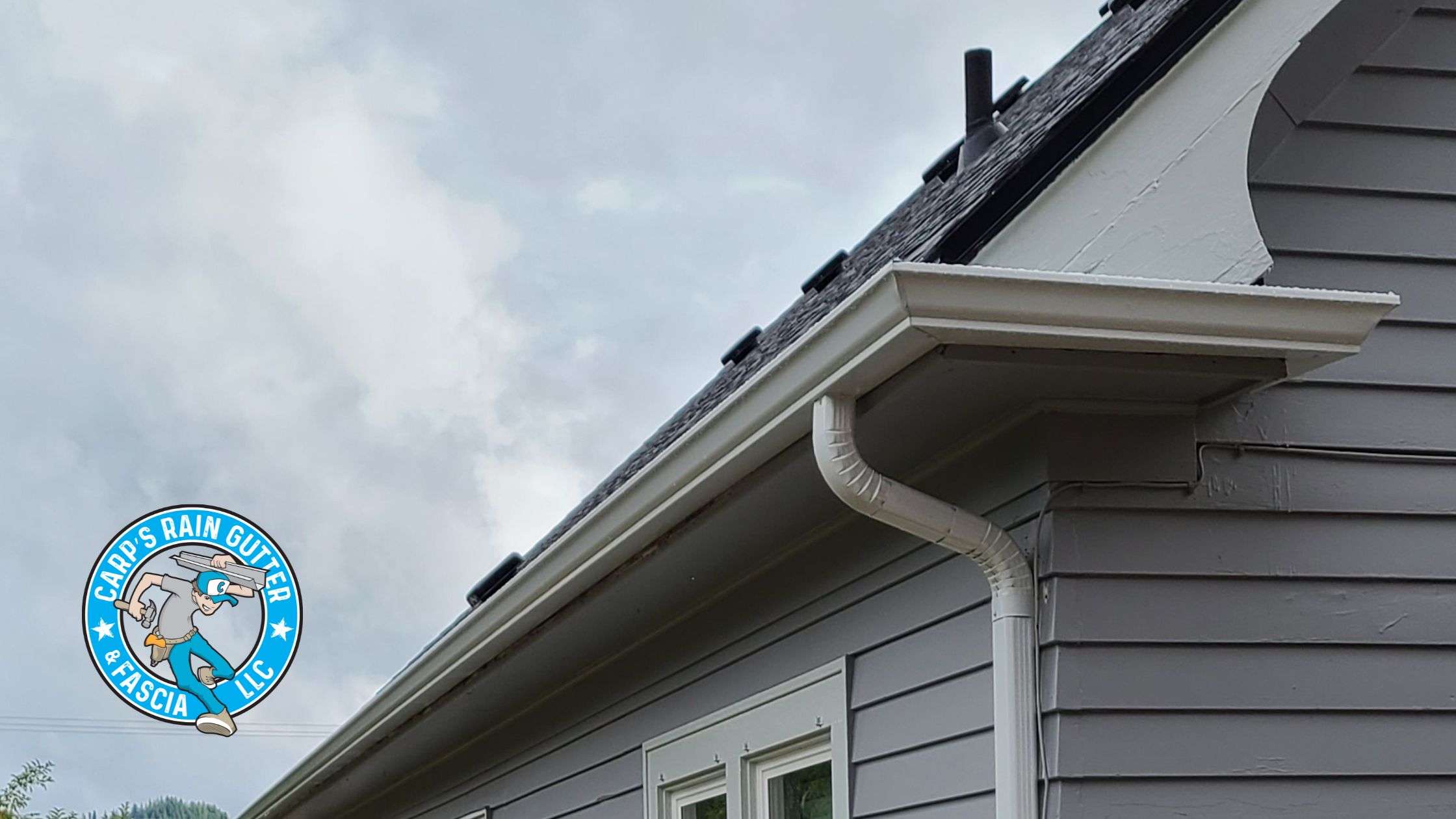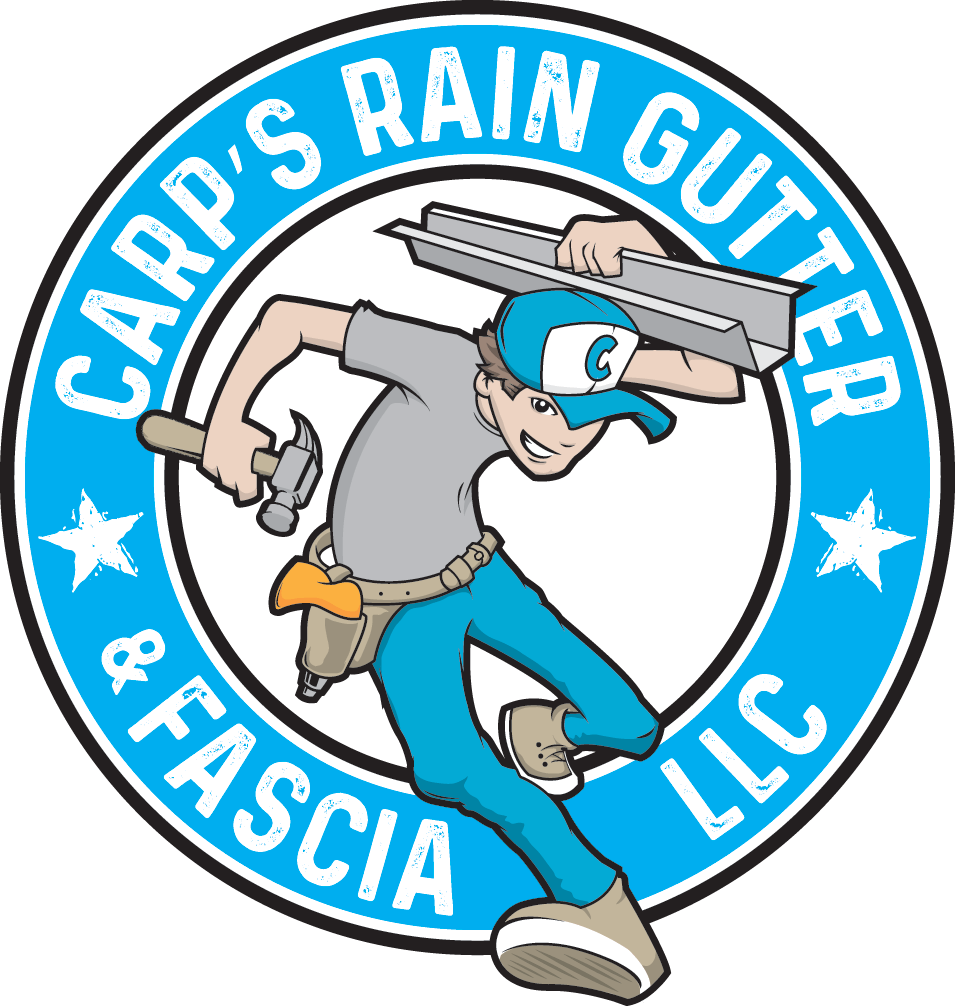Maintaining your rain gutters is essential for protecting your home from water damage. Gutters channel rainwater away from your roof and foundation, preventing leaks, erosion and structural damage. At Carp’s Rain Gutters, we understand the importance of keeping your gutters in top condition. Here’s a comprehensive guide on performing a thorough rain gutter inspection to ensure your home remains safe and dry.
1. Safety First
Before you begin your rain gutter inspection, prioritize safety. Use a sturdy ladder placed on a flat, stable surface, and consider using ladder stabilizers for extra security. Wear gloves to protect your hands from sharp debris, and have someone nearby to assist if needed.
2. Visual Inspection from the Ground
Start by conducting a visual inspection from the ground. Look for obvious signs of damage such as sagging gutters, loose or missing brackets, and sections that have pulled away from the house. Check for visible clogs or blockages that could impede water flow. Inspect the downspouts for any obstructions or damage.
3. Clean the Gutters
Before performing a more detailed inspection, clean the gutters thoroughly. Remove leaves, twigs and other debris using a scoop or trowel. You can also use a garden hose to flush out smaller particles and ensure the downspouts are clear. Cleaning the gutters allows you to see any underlying issues hidden by debris.
4. Check for Leaks and Holes
With the gutters clean, inspect them closely for leaks, holes and rust spots. Small holes can be sealed with gutter sealant, while larger holes may require patches or professional repair. Check the seams and joints for signs of separation or wear, as these are common areas for leaks to develop.
5. Inspect Gutter Slope and Alignment
Proper gutter alignment and slope are crucial for effective water drainage. Use a level to ensure that the gutters are sloping slightly towards the downspouts. The recommended slope is about 1/4 inch for every 10 feet of gutter. Adjust the hangers to correct the alignment if you notice any sections that are too flat or sloping away from the downspouts.
6. Assess the Fascia and Soffit
The fascia and soffit are the boards that run along the edge of your roof and support the gutters. Inspect these areas for signs of water damage, such as rotting wood or peeling paint. Damaged fascia or soffit can compromise the stability of your gutters and should be repaired promptly to prevent further issues.
7. Evaluate Gutter Hangers and Fasteners
Check all gutter hangers and fasteners to ensure they are secure and in good condition. Loose or missing hangers can cause the gutters to sag or detach from the house. Tighten any loose screws and replace damaged hangers to maintain proper gutter support.
8. Test the Downspouts
After inspecting the gutters, test the downspouts to ensure they function correctly. Use a garden hose to run water through the gutters and downspouts, checking for any blockages or leaks. Ensure the water flows freely and is directed away from your home’s foundation.
9. Schedule Regular Maintenance
Regular maintenance is key to prolonging the life of your rain gutters. Schedule routine inspections and cleanings at least twice a year, preferably in the spring and fall. Additionally, consider installing gutter guards to reduce the amount of debris accumulating in your gutters, making maintenance easier and less frequent.
Performing a thorough rain gutter health check is essential for maintaining the integrity of your home. By following these steps, you can identify and address potential issues before they become major problems. At Carp’s Rain Gutters, we offer professional gutter inspection, cleaning, and repair services to keep your gutters in optimal condition. Contact us today to schedule a service and ensure your home is protected from water damage year-round.


